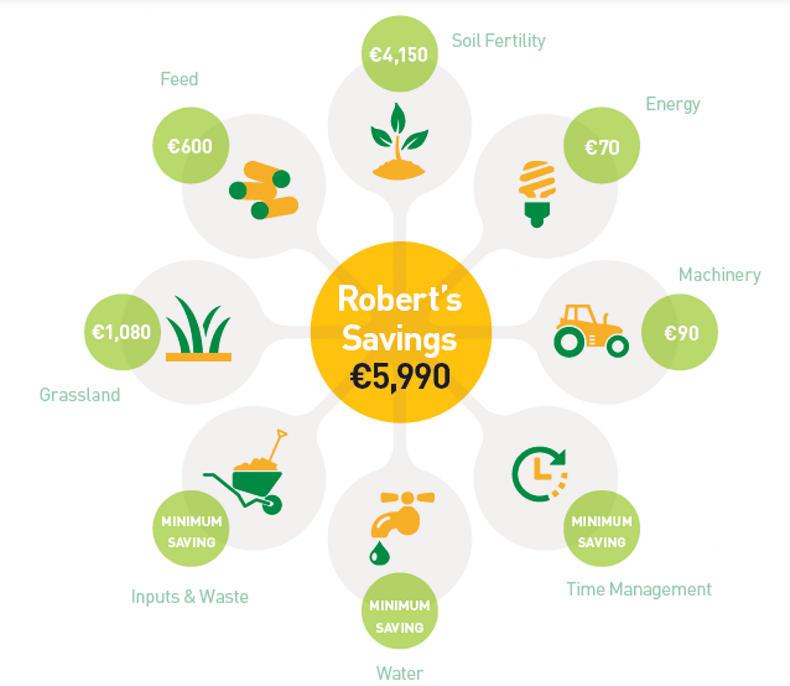All this information was examined and a half-day farm visit took place. During the farm visit, the Smart Farming team focused on soil fertility, energy use, grassland management, water use, feed, inputs, waste, time and machinery management.
Let’s look at where the €5,990 savings were identified:

Grassland management:
Energy management:
Feed savings:
Machinery:
Soil Fertility:
Reducing the climate impact by 20%: During the Smart Farming cost saving study, a carbon reduction strategy for Robert’s farm was developed using the Carbon Navigator decision support tool, developed by Teagasc and Bord Bia. Potential to reduce greenhouse gas emissions by 20% was identified. Many of the measures, such as nitrogen efficiency and slurry spreading timing, will also lead to other positive environmental outcomes and reduce risks to water quality.

Robert’s view
“This Smart Farming study was very worthwhile. It was really good to have someone come in and look at what I do every day.
“Like many farmers, I was more focused on the livestock and not enough on managing my own resources better – the land, the grass, the feed, even my own time. It’s good to know that I can also improve the local environment. After all, for myself and my wife, Goldie, it’s about making a difference for my daughter, Heidi, and the next generation.”
For more information on Smart Farming visit www.SmartFarming.ie, or email SmartFarming@ifa.ie
Call 01 426 0343